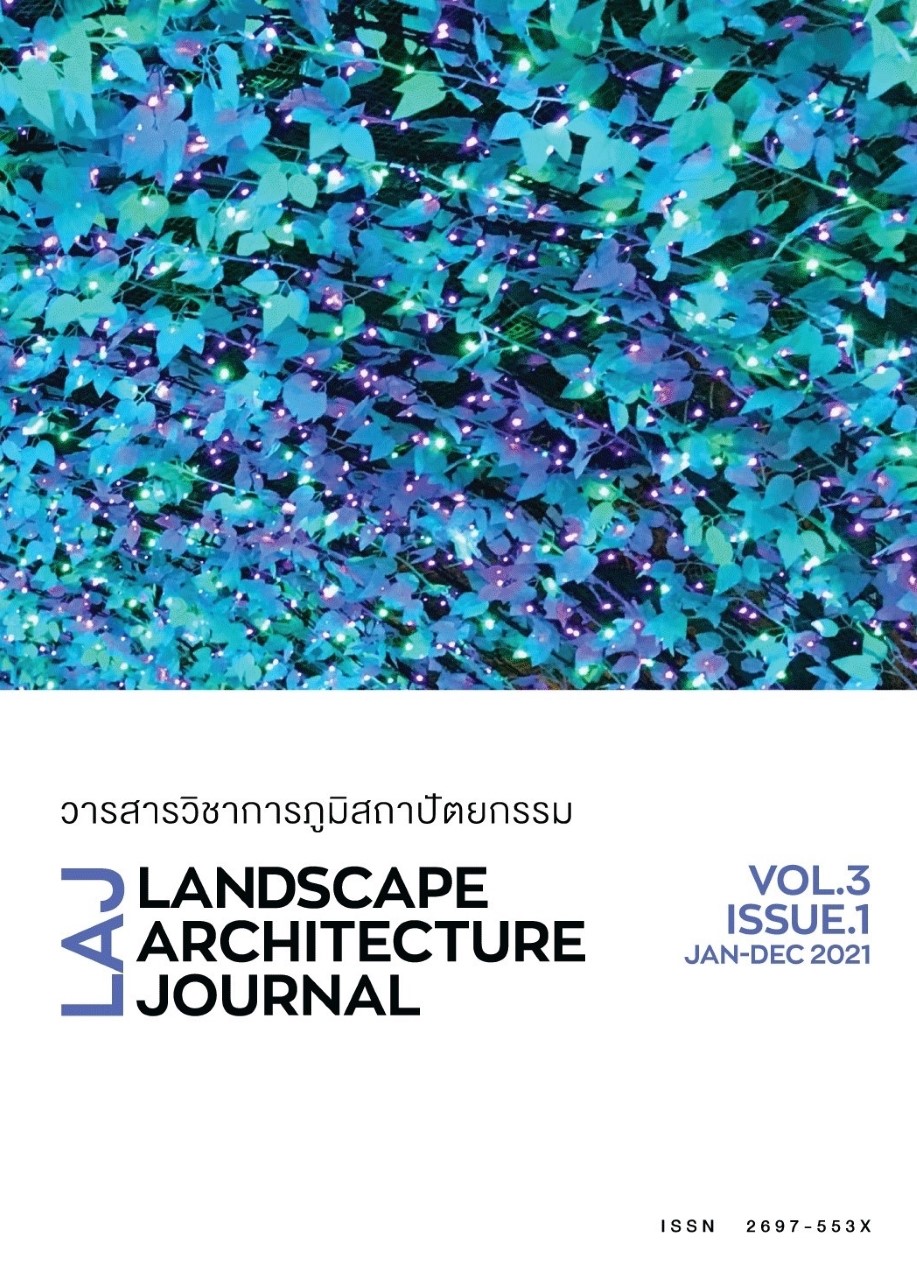Development of Board Game as a Teaching Tool on Designing a House Based on Universal Design Concept
Main Article Content
Abstract
The objectives of this experimental research were to develop the board game as a teaching tool of designing a house based on the universal design concept for undergraduate architecture students. Assessing satisfaction of learners and the learning outcomes by the process of board game contains draw and collect “Room cards” to exchange “Room tiles” components that represented UD facilities area requirements i.e. (A) Parking lot (B) Ramp (C) Front terrace (D) Activity room and information (E) Bedroom (F) Bathroom through the circulation “Path tiles” component connecting (A) to (F). Then, arranging all components on a playboard “Site” along with installing the “Design criteria cards.” This game encourages learners for pre-planning strategy “Begin with the end in mind.” Each round, score was counted for each conditional placement of room tile, arrangement of path tiles and design criteria cards within 45 - 60 minutes. The results of this research were 1) Game mechanic: Learners have used space arrangement skills along with the opportunity to drawn cards competing with other learner. Using a high-risk, high-return scoring system, character role cards system with special abilities for learners who have made a mistake to catch up. Tile placement mechanic allows learners to feel their expectations according to the plan. 2) Game elements: Room tile and Path tile placement encourage learners focus on UD facilities types and managing space to be cost-effective and sequential in the travel chain. The UD Criteria cards built into the room tiles helps learners remember the essential design criteria. 3) Assessment of satisfaction and learning outcomes of the sample of learners by finding the proportion of the top two highest answers. Comparing two groups of teaching methods which are Board game group and Lecture group. The learning outcomes were measured by taking the same test pre and post studying in five topics: 1) UD Overview 2) Circulation system 3) Criteria design standard 4) Problem solving 5) Application. The study found that the satisfaction of board game group learners are in the moderate to highest in all topics and their knowledge were increased all topics, especially the design standards. The suggestion of this research is using lectures to build an introductory understanding, then using a combination of board games to improve the academic performance better.
Article Details

This work is licensed under a Creative Commons Attribution-NonCommercial-NoDerivatives 4.0 International License.
References
กฎกระทรวงกำหนดสิ่งอำนวยความสะดวกในอาคารสำหรับผู้พิการหรือทุพพลภาพ และคนชรา (ฉบับที่ 2) พ.ศ. 2564. (4 มีนาคม 2564). ราชกิจานุเบกษา. เล่ม 138 ตอนที่ 16 ก, หน้า 19-29.
ชุมเขต แสวงเจริญ. (2562). ปรับเมืองเพื่อคนทั้งมวล (Universal Design) สำหรับองค์กรปกครองส่วนท้องถิ่น (พิมพ์ครั้งที่ 1). กรุงเทพฯ: สถาบันพระปกเกล้า.
ไตรรัตน์ จารุทัศน์. (2558). เรื่องน่ารู้ยูดี สำหรับสถาปนิกและผู้สนใจ Universal Design Guide book คู่มือการออกแบบเพื่อคนทุกคน (พิมพ์ครั้งที่ 1). กรุงเทพฯ: เทพเพ็ญวานิสย์.
ประสพชัย พสุนนท์. (2557) ศึกษาการกำหนดขนาดตัวอย่างตามแนวทาง Krejcie and Morgan (1970) ในการวิจัยเชิงปริมาณ. วารสารวิชาการศิลปศาสตร์ประยุกต์. 112-125.
วรัตต์ อินทสระ. (2562). Game Based Learning The Latest Trend Education 2019 เปลี่ยนห้องเรียนเป็นห้องเล่น. เอกสารประกอบการอบรมและปฏิบัติการ “เปลี่ยนห้องเรียนเป็นห้องเล่น” [Game Based Learning].
Luke. (2018). Board Game Mechanics 101: An Introduction To Core Gaming Mechanics. Retrieved from https://startyourmeeples.com/2018/05/30/board-game-mechanics-101-an-introduction-to-core-gaming-mechanics/
Tinsman, B. (2008). The Game Inventer’s Guidebook. Garden City, NY: Morgan James Publishing, LLC.

